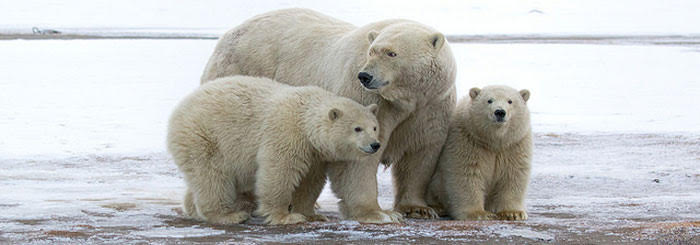A new story in Scientific American reports levels in polar bear cubs are 1000 times the acceptable level for humans.
“These persistent organic pollutants, or POPs, come from industry and reach the Arctic via air or ocean currents. The compounds include older chemicals like PCBs (polychlorinated biphenyls), whose production peaked in the late 1960s and early 1970s, and relatively newer ones including perfluorinated chemicals, which are used in water-resistant fabric coatings and firefighting foam. The pollutants have been linked with reproductive and immune problems in the bears as well as cancer, and their chemical structures make them nearly impossible for organisms to degrade.”
Bears accumulate high levels of the chemicals because they are top predators (just like we are).
Chemicals accumulate in both bears (and humans) because they build up through the food chain, in plants, fish and, for bears, finally seals—the bears’ main food source. Many of the compounds concentrate in the seal blubber, giving bears a hefty dose of chemicals when they eat seal blubber. The pollutants are then transferred to cubs via their mothers’ milk.
(And the same happens with humans.)
The study notes that between 1985 and 2010 the overall risk in cubs declined by 30 percent because many of the older chemicals were banned. Despite this progress, however, chemicals produced more recently are keeping the risk high. And these new chemicals, as well as the replacements for banned chemicals, are now being found in polar bear cubs in the arctic, thousands of miles from industrial civilization.
(It’s just interesting to me that this article, which is an environmental piece, makes no connection to the similar human exposure. The references to humans in this post are all mine.)
SCIENTIFIC AMERICAN: Polar Bear Cubs at Hight Risk from Toxic Industrial Chemicals, Despite Bans




